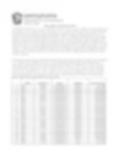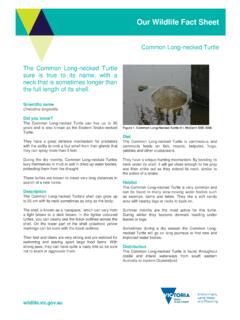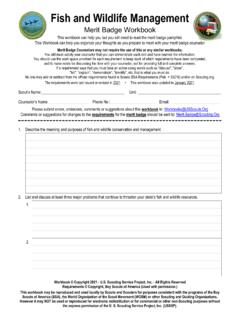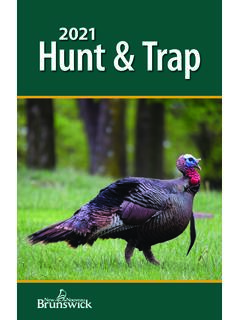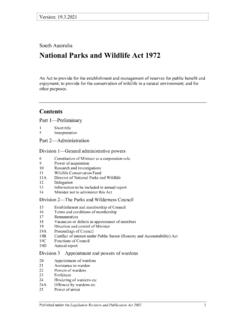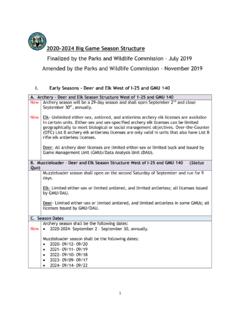Transcription of Guidelines for Reducing Cockatoo Damage - Wildlife - Wildlife
1 Guidelines for Reducing Cockatoo Damage Wildlife management Methods Photo and Figure credits Cover photograph: Sulphur Crested Cockatoo Nick Talbot Figure 1: Long-billed Corella Drawing courtesy of Jess Davies Sulphur-crested Cockatoo and Galah Drawings courtesy of Nic Day Figure 2: Kite to simulate bird of prey Zoe Elliott Figure 3: Galah Nick Talbot Figure 4: Long-billed Corella Ian Temby Figure 5: Cockatoo Damage to timber frames Jim O Brien Figure 6: Cockatoo Damage to outdoor furniture Ian Temby Figure 7: Cockatoo Damage to sporting ground Mark Breguet Figure 8: Corellas feeding on grain Mark Breguet Figure 9: Cockatoo Damage to crops Ian Temby The State of Victoria Department of Environment, Land, Water and Planning 2018 This work is licensed under a Creative Commons Attribution International licence.
2 You are free to re-use the work under that licence, on the condition that you credit the State of Victoria as author. The licence does not apply to any images, photographs or branding, including the Victorian Coat of Arms, the Victorian Government logo and the Department of Environment, Land, Water and Planning (DELWP) logo. To view a copy of this licence, visit ISBN 978-1-76047-876-6 pdf/online Disclaimer This publication may be of assistance to you but the State of Victoria and its employees do not guarantee that the publication is without flaw of any kind or is wholly appropriate for your particular purposes and therefore disclaims all liability for any error, loss or other consequence which may arise from you relying on any information in this publication.
3 Accessibility If you would like to receive this publication in an alternative format, please telephone the DELWP Customer Service Centre on 136186, email or via the National Relay Service on 133 677 This document is also available on the internet at Guidelines for Reducing Cockatoo Damage Wildlife management Methods 1 Introduction .. 3 About this guideline .. 3 Cockatoos .. 3 Historical background .. 3 Cockatoo behaviour .. 3 Cockatoos beaks constantly grow .. 3 Cockatoos are sociable .. 3 Cockatoos are creatures of habit .. 3 Cockatoos have favourite foods.
4 3 Cockatoo Damage is seasonal .. 4 Cockatoos are scared of birds of prey .. 4 Legal Status .. 4 Wildlife Act 1975 .. 4 Authority to Control Wildlife .. 4 Governor in Council Order .. 4 Illegal methods of control .. 5 Trap and Gas .. 5 Poisoning .. 5 Birds of Prey .. 5 Managing impacts from cockatoos .. 5 Cockatoo Damage management Plans .. 5 Step 1: Define the Problem .. 5 Step 2: Develop a Plan .. 5 Step 3: Implement the Plan .. 6 Step 4: Monitor and evaluate the results .. 6 management methods .. 6 The role of bird destruction .. 6 management methods for various settings.
5 7 Damage around the 7 Light fixtures, powerlines and other fixtures .. 7 Damage to timber fittings and outdoor furniture .. 7 Damage to newly planted tree seedlings .. 8 Damage to horticultural crops, fruits, nuts, grapes and flowers .. 8 Damage to roost trees through excessive pruning and noisy roosting behaviour .. 8 Damage to sporting grounds (bowling greens and golf courses) .. 8 Damage to feedlots .. 9 Damage to feed trails and stubble .. 9 Contents 2 Guidelines for Reducing Cockatoo Damage Wildlife management Methods Damage to hay and straw bales .. 10 Damage to silage and grain covers.
6 10 Damage to ripening crops or around trees, dams and bare or thin patches within the crop .. 10 Further information .. 11 Services and equipment .. 11 Gas Guns .. 11 Bird Frite cartridges .. 11 Bird of Prey Kites .. 11 Eye-Spot Balloons .. 11 Electric Shock Perches .. 11 Recorded alarm calls .. 11 Table 1: Summary of actions to reduce Damage in various situations .. 12 Strategic approaches .. 12 Exclusion methods .. 12 Building alterations / maintenance .. 12 Good crop management .. 12 Scaring (Kites, scarecrows, hides and vehicles) and shooting .. 12 Decoy feeding.
7 12 Guidelines for Reducing Cockatoo Damage Wildlife management Methods 3 About this guideline Cockatoo Damage is a significant problem for many Victorians, especially in regional and rural areas. Impacts are experienced across many different farming ventures, on community assets and private residences. This guideline provides information about ecological and behavioural traits of Cockatoo species to explain why the birds can sometimes cause Damage to property or agriculture. It sets out the legal and policy framework in place for the protection, conservation and management of these birds in Victoria.
8 This guideline also provides practical tips and management methods applicable to different situations, to build people s capacity to mitigate the impact that cockatoos can have on the built and natural environment. Cockatoos Cockatoos, corellas and galahs, collectively referred to as cockatoos , are some of Australia s most widely recognised native birds. In this guideline, the term Cockatoo is used to refer to the following three species, which exhibit similar behavioural traits. 1. 2. 3. Figure 1: 1. Long-billed Corella Cacatua tenuirostris 2.
9 Sulphur-crested Cockatoo Cacatua galerita 3. Galah Eolophus roseicapillus Historical background When large areas of Victoria were cleared for farming, Cockatoo numbers, particularly the Long-billed Corella, were severely reduced due to loss of natural foods like Native Yam (Microseris scapigera). Exotic grain crops and introduced weeds like Onion Grass (Romulea rosea) replaced the Native Yam as their food. Cockatoos adjusted well to this change, but competition with rabbits kept their numbers low.
10 With the introduction of myxomatosis in the 1950s cockatoos no longer competed with large numbers of rabbits for remnant grain left in stubble after the harvest each summer and as a result their numbers have increased. Long-billed Corellas have now recolonised their traditional range whilst Galahs are spreading further and further south. Cockatoo behaviour Understanding Cockatoo ecology and behaviour is the first step in managing the problems they cause, and can help you to modify your property or processes to lessen negative impacts.



